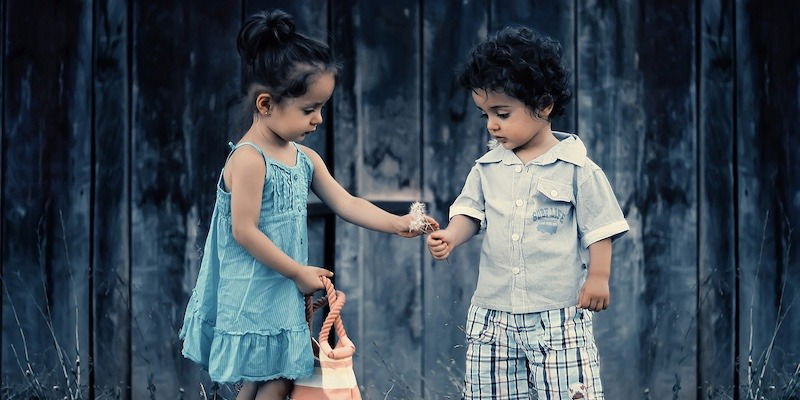儿童情感发展:3个理论解释
在本文中,我们将深入探讨婴儿期情绪的出现以及从幼儿期到成年期情绪的巨大变化。
我们知道,生命最初几年的经历,无论是积极的还是消极的,都会嵌入我们大脑的结构中,并对终生健康产生深远影响。
这项研究对我们每个人都至关重要,因为我们需要倡导改进政策和资金分配,以改善早期干预。
人脑具有可塑性,并且基于个人经历不断变化。情绪发展也是如此。无论年龄多大,投资于儿童的情绪发展和我们自己的情绪发展都不算晚!
希望您喜欢阅读这篇文章。别忘了下载我们的三个情感智能练习。
常见问题
情绪发展过程中发生了什么?
情绪发展是从婴儿期到成年期情绪状态、表达、推理和能力的变化过程。
情绪发展为什么重要?
情绪发展对于神经发育、学习、健康的人际关系、积极的幸福感和终生健康都很重要。
如何提高你的情绪发展?
通过自我觉察来提高你的情绪发展,例如通过写日记、练习日常冥想和开发呼吸练习来管理压力。
情绪何时以及如何发展?
情绪从婴儿期到成年期不断发展,在认知发展变化和社交经验的影响下进行。
参考文献
- Barrett, L. F. (2022, Feb 28). The big idea: Is it time to stop talking about “nature vs nurture”? The Guardian. https://www.theguardian.com/books/2022/feb/28/the-big-idea-is-it-time-to-stop-talking-about-nature-versus-nurture.
- Buss, K. A., Cole, P. M., & Zhou, A. M. (2019). Theories of emotional development: Where have we been and where are we now? In V. LoBue, K. Pérez-Edgar, & K. A. Buss (Eds.), Handbook of emotional development (pp. 7–25). Springer.
- Calem, M., Bromis, K., McGuire, P., Morgan, C., & Kempton, M. J. (2017). Meta-analysis of associations between childhood adversity and hippocampus and amygdala volume in non-clinical and general population samples. NeuroImage Clinical, 14, 471–479.
- Camras, L. A. (2022). Emotional development across the lifespan. Guilford Press.
- Cassiers, L. L. M., Sabbe, B. G. C., Schmaal, L., Veltman, D. J., Penninx, B. W. J. H., & Van Den Eede, F. (2018). Structural and functional brain abnormalities associated With exposure to different childhood trauma subtypes: A systematic review of neuroimaging findings. Frontiers in Psychiatry, 9.
- Chang, X., Jiang, X., Mkandarwire, T., & Shen, M. (2019). Associations between adverse childhood experiences and health outcomes in adults aged 18–59 years. PLOS ONE, 14(2).
- Compas, B. E., Jaser, S. S., Dunbar, J. P., Watson, K. H., Bettis, A. H., Gruhn, M. A., & Williams, E. K. (2014). Coping and emotion regulation from childhood to early adulthood: Points of convergence and divergence. Australian Journal of Psychology, 66(2), 71–81.
- Cutuli, D. (2014). Cognitive reappraisal and expressive suppression strategies role in the emotion regulation: An overview on their modulatory effects and neural correlates. Frontiers in Systems Neuroscience, 8.
- Eisenberg, N., Spinrad, T. L., & Eggum, N. D. (2010). Emotion-related self-regulation and its relation to children’s maladjustment. Annual Review of Clinical Psychology, 6, 495–525.
- Felitti, V. J., Anda, R. F., Nordenberg, D., Williamson, D. F., Spitz, A. M., Edwards, V., Koss, M. P., & Marks, J. S. (1998). Relationship of childhood abuse and household dysfunction to many of the leading causes of death in adults. The Adverse Childhood Experiences (ACE) Study. American Journal of Preventive Medicine, 14(4), 245–258.
- Garnefski, N., Rieffe, C. J., Jellesma, F., Meerum Terwogt, M., & Kraaij, V. (2007). Cognitive behaviour regulation strategies and emotional problems in early adolescents: The development of an instrument. European Child and Adolescent Psychiatry, 16, 1–9.
- Gilbert, L. K., Breiding, M. J., Merrick, M. T., Thompson, W. W., Ford, D. C., Dhingra, S. S., & Parks, S. E. (2015). Childhood adversity and adult chronic disease: An update from ten states and the District of Columbia, 2010. American Journal of Preventive Medicine, 48(3), 345–349.
- Hart, H., & Rubia, K. (2012). Neuroimaging of child abuse: A critical review. Frontiers in Human Neuroscience, 6.
- Hoemann, K., Xu, F., & Barrett, L. F. (2019). Emotion words, emotion concepts, and emotional development in children: A constructionist hypothesis. Developmental Psychology, 55(9), 1830–1849.
- Izard, C. E., & Trentacosta, C. J. (2020, November 2). Emotional development. Encyclopedia Britannica. https://www.britannica.com/science/emotional-development
- Kochanska, G. (2001). Emotional development in children with different attachment histories: The first three years. Child Development, 72(2), 474–490.
- Lewis, M. (2022). The self-conscious emotions. Encyclopedia on Early Childhood Development. https://www.child-encyclopedia.com/emotions/according-experts/self-conscious-emotions
- Martin, R. E., & Ochsner, K. N. (2016). The neuroscience of emotion regulation development: Implications for education. Current Opinion in Behavioral Sciences, 10, 142–148.
- National Scientific Council on the Developing Child. (2004). Children’s emotional development is built into the architecture of their brains. https://developingchild.harvard.edu/resources/childrens-emotional-development-is-built-into-the-architecture-of-their-brains/
- National Scientific Council on the Developing Child. (2010). Early experiences can alter gene expression and affect long-term development. https://developingchild.harvard.edu/resources/early-experiences-can-alter-gene-expression-and-affect-long-term-development/
- National Scientific Council on the Developing Child. (2020). Connecting the brain to the rest of the body: Early childhood development and lifelong health are deeply intertwined. https://developingchild.harvard.edu/resources/connecting-the-brain-to-the-rest-of-the-body-early-childhood-development-and-lifelong-health-are-deeply-intertwined/.
- Pagano, M., & Parnes, M. (2022). Emotional development and attachment. OER Commons. Retrieved December 20, 2023, from https://pressbooks.cuny.edu/infantandchilddevelopmentcitytech/chapter/emotional-development-and-attachment/.
- Perry, B. D. (2002). Childhood experience and the expression of genetic potential: What childhood neglect tells us about nature and nurture. Brain & Mind, 3(1), 79–100.
- Pollak, S. D., Camras, L. A., & Cole, P. M. (2019). Progress in understanding the emergence of human emotion. Developmental Psychology, 55(9), 1801–1811.
- Rosenblum, G. D., & Lewis, M. (2006). Emotional development in adolescence. In G. R. Adams & M. D. Berzonsky (Eds.), Blackwell handbook of adolescence (pp. 269–289), Blackwell Publishing.
- Saarni, C., & Camras, L. A. (2022). Emotional development in childhood. Encyclopedia on Early Childhood Development. https://www.child-encyclopedia.com/emotions/according-experts/emotional-development-childhood
- Thompson, R. A., & Goodvin, R. (2007). Taming the tempest in the teapot: Emotion regulation in toddlers. In C. A. Brownell & C. B. Kopp (Eds.), Socioemotional development in the toddler years: Transitions and transformations (pp. 320–341). Guilford Press.
- Walle, E. A., Reschke, P. J., & Knothe, J. M. (2017). Social referencing: Defining and delineating a basic process of emotion. Emotion Review, 9(3), 245–252.
- Wellman, H. M., Fang, F., & Peterson, C. C. (2011). Sequential progressions in a theory-of-mind scale: Longitudinal perspectives. Child Development, 82(3), 780–792.
- Zero to Three. (2017, August 2). The basics of infant and early childhood mental health: A briefing paper. https://www.zerotothree.org/resources/1-the-basics-of-infant-and-early-childhood-mental-health-a-briefing-paper/
博客文章
相关文章
-
![道德发展]()
理论与书籍
道德发展是什么?探索科尔伯格的6个阶段
2024年8月8日
0
2024年11月10日
当我们在社交媒体上看到不公正、不公平、勇敢或极端善良的故事时,我们自然会体验到一系列情绪,从愤怒到同情……
(道德发展)
-
![需求层次]()
理论与书籍
需求层次:2024年的马斯洛发现
2024年1月8日
1
2024年10月2日
马斯洛的需求层次理论是人类心理学中一个最能影响幸福感的重要理论。虽然马斯洛的需求层次理论……
(需求层次)
-
![经典条件反射恐惧症]()
理论与书籍
使用经典条件反射治疗恐惧症和疾病
2023年7月13日
0
2024年7月28日
如果说“巴甫洛夫”的名字让你想起什么,那可能是经典条件反射,这是一种由伊万·巴甫洛夫在19世纪末首次发现的心理现象,它已经被证明……
分类
按类别阅读其他文章
- 身体与大脑 (53)
- 辅导与应用 (40)
- 同情心 (24)
- 咨询 (41)
- 情商 (23)
- 感恩 (19)
- 哀伤与丧亲 (19)
- 幸福与SWB (40)
- 意义与价值观 (27)
- 冥想 (17)
- 正念 (41)
- 动机与目标 (42)
- 乐观与心态 (30)
- 积极认知行为疗法 (29)
- 积极沟通 (24)
- 积极教育 (38)
- 积极情绪 (33)
- 积极领导力 (17)
- 积极育儿 (14)
- 积极心理学 (22)
- 积极工作场所 (35)
- 生产力 (17)
- 人际关系 (47)
- 复原力与应对 (40)
- 自我意识 (22)
- 自尊 (38)
- 优势与美德 (31)
- 压力与倦怠预防 (34)
- 理论与书籍 (44)
- 治疗练习 (39)
- 治疗方法 (57)


